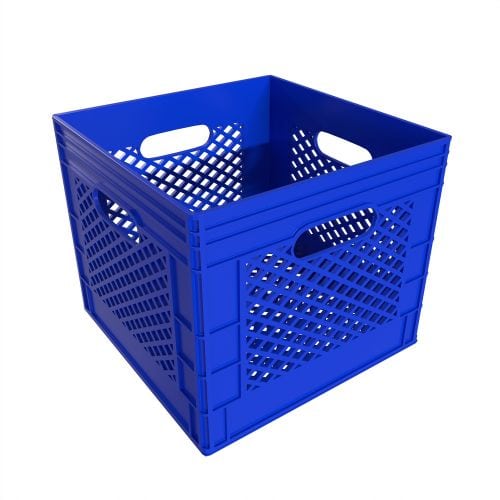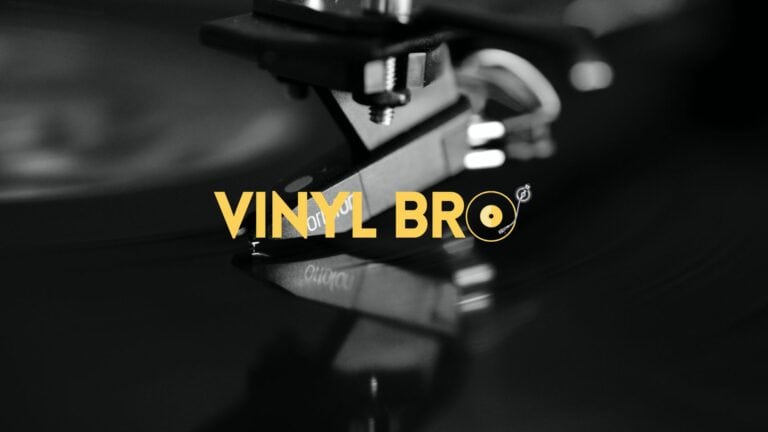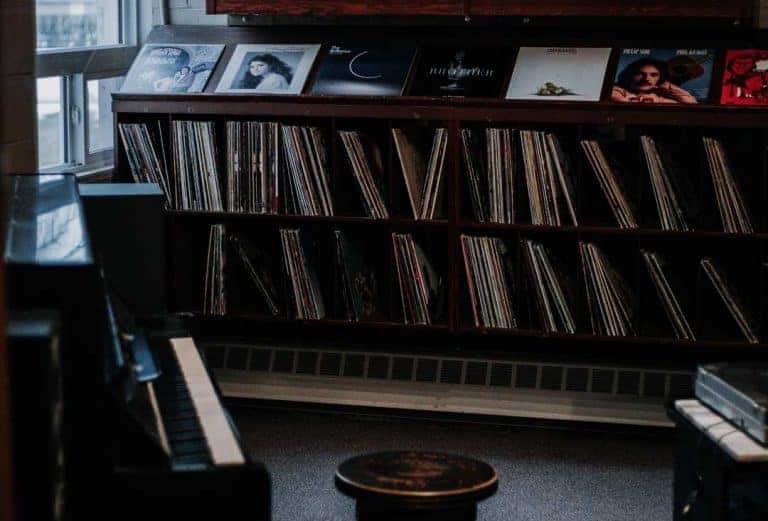Milk Crates for Records: Storing Records in Milk Crates
Have you ever wondered why some of those plastic milk crates seem to be the perfect fit for your vinyl collection? You’re not alone in noticing their convenience and the almost serendipitous dimensions that accommodate records as if by design.
As you consider integrating them into your home for that effortlessly retro vibe, it’s important to pause and reflect on the legal implications that come with this choice. While they might promise an organized array of your favorite tunes, using milk crates for anything other than their intended purpose could be more than just a faux pas—it might skirt the edges of legality.
Stay tuned as we explore the fine line between trendy storage solutions and unintended consequences that could arise from such an innocent act of repurposing. While we also explore some alternate storage options.
Key Takeaways
- Milk crates are a popular choice for record collectors due to their sturdy, portable, and customizable nature.
- Unauthorized use of milk crates is illegal, and there are laws and regulations in place to prevent theft and misuse.
- Storing records in authentic dairy milk crates can potentially lead to legal consequences.
- There are alternative storage options available, such as vintage plastic crates, wooden crates, and metal crates, that are suitable for vinyl record storage.
Is It OK To Store Records in a Milk Crate?
Storing your records in a milk crate may seem like a convenient solution, but it’s important to ensure the crate isn’t property of the dairy industry to avoid potential legal issues. You might’ve seen others do it or even read about the trend, but here’s the deal: if that crate is stamped with a dairy name or logo, it’s not yours to use for vinyl storage—or anything else, for that matter.
You see, unauthorized use of milk crates is actually technically illegal. It’s not just a slap on the wrist; you could face a hefty fine or even jail time in some states. In states like Pennsylvania, the law is clear: nabbing a milk crate could cost you up to $300 or land you in jail for up to 90 days. And Pennsylvania isn’t the only one. Many states have similar laws on the books, because the dairy industry loses big bucks—about $80 million a year—from this kind of theft.

What Size Crates Fit Records?
When selecting crates for your vinyl collection, ensure they measure over 13 inches in height and 14 inches in width to comfortably fit standard 12-inch LPs. This size allows you to store your albums upright, which is vital for preserving their condition. Remember, you’re not just stashing them away; you’re protecting your musical treasures.
What you’re looking for are crates that can hold anywhere from 40 to 50 records. That’s the sweet spot for both portability and storage efficiency. While vintage plastic crates are a solid bet, always verify the dimensions before you commit. You don’t want to end up with a crate that’s too snug or, worse, too spacious, causing your records to slump and potentially warp.
How Do You Store Vinyl in a Crate?
And let’s not forget the legal side of things. Steer clear of using authentic dairy milk crates; they’re often illegal to possess and could land you in hot water. Instead, opt for alternatives like wooden or metal crates, or even those made from sustainable materials like bamboo. They’re just as sturdy and can add a touch of class or eco-friendliness to your collection.
To properly store your vinyl in a crate, ensure that the records are standing upright, similar to books on a shelf, to prevent warping and damage. This position helps distribute pressure evenly across the disc, which is essential for maintaining the shape and sound quality of your vinyl.
When you’re organizing your records, leave a bit of wiggle room and use high quality protective outer sleeves to avoid ring wear on the album covers. You don’t want them packed too tightly; this makes it harder to flip through your collection and can cause unnecessary strain on the vinyl. Conversely, don’t leave them too loose, or they might slant and eventually warp.
Be mindful of the material of the crate you’re using. While authentic dairy milk crates may seem like a cool, vintage choice, they’re often illegal to use unless purchased legitimately. Look for alternatives like wooden or metal crates, which can add a stylish touch to your collection while staying on the right side of the law.
Remember to slip your records into protective sleeves before placing them in your crate. These sleeves guard against dust, dirt, and scratches.
Where To Get Milk Crates for Records
You’ll find legitimate milk crates perfect for your record collection at home improvement stores, specialty storage shops, and online retailers. These aren’t the dairy milk crates that can land you in hot water; they’re legal alternatives designed for personal storage.
Specialty stores often offer a more curated selection, with various materials and designs to match your decor. If you’re hunting for something unique, don’t overlook thrift stores or yard sales. You might stumble upon a vintage crate that’s both legal and adds character to your space.
Online marketplaces like Amazon are treasure troves for record storage solutions. Remember to read the dimensions carefully; you want a crate that’s not only stylish but functional for your LPs.
Lastly, don’t ignore the power of DIY. If you’re crafty, consider making your own record crate. You’ll get exactly what you want and the satisfaction of a personalized touch to your collection.
How Many Records Fit in a Milk Crate
A standard milk crate can typically hold between 40 to 50 vinyl records, depending on the thickness of the sleeves and any additional protective materials used. If you’re using outer sleeves or additional cushioning to safeguard your cherished collection, you might find the number of records that fit snugly into the crate slightly reduced.
Remember, you’re aiming for a snug fit without forcing the records, as cramming them in too tightly can cause warping or sleeve damage.
You’ll want to ensure that the records stand upright, like books on a shelf, to prevent any unnecessary strain or warping over time. It’s also essential to consider the weight; fully loaded milk crates can get heavy, and if you’re stacking them, you’ll need to be mindful of the stability and strength of the bottom crate.
When you’re dealing with an assortment of records—some with gatefold covers, others with single sleeves—the capacity of your milk crate may vary. Gatefold covers, which are thicker, will take up more space, reducing the total count. So, if you’ve got a mix, estimate on the lower end of the 40 to 50 range to ensure a proper fit.

Is It Illegal To Use Milk Crates for Vinyl
While many vinyl enthusiasts opt for milk crates due to their convenience and size, it’s important to know that unauthorized use of these crates is actually against the law in several states. You might be drawn to the rugged charm and perfect fit of authentic dairy crates for your record collection. However, you should be aware that taking these crates without permission could land you in hot water.
In places like Pennsylvania, for instance, the unauthorized possession of milk crates can result in a hefty fine or even jail time. Dairy companies consider these crates their property, and they’re not shy about enforcing the law. They lose millions each year to crate theft, and they’re fighting back.
If you’ve got your heart set on a crate-like solution for your vinyl, you better stick to containers that you’ve lawfully acquired. You can often find similar crates at thrift stores or yard sales that are legal to use. Make sure you’re not unintentionally breaking the law. It’s worth the effort to ensure your record storage is above board and free of any potential legal drama.
Conclusion
So, you’re eyeing those milk crates for your records, right? They’re a snug fit and oozing with charm, but tread carefully.
Nabbing crates without permission could be illegal, landing you in trouble. Why risk it when there are heaps of legit storage options out there?
Keep your vinyl safe and your conscience clear. Dive into those alternatives, and keep your collection both stylish and on the right side of the law.
Happy crate-digging—legally, of course!
Frequently Asked Questions – Vinyl Record and Album Storage
What are the benefits of using milk crates for storing records?
Milk crates are durable, stackable, and provide adequate support for vinyl records. They also allow for easy access to your record collection.
Where can I find milk crates for storing records?
You can find milk crates for storing records at local thrift stores, online marketplaces, or through online retailers specializing in storage solutions.
How effective is using milk crates for storing records compared to other storage options?
Using milk crates for storing records is a great option due to their sturdy construction, stackability, and easy access. Many music enthusiasts find them to be a practical and versatile solution for record storage.
What are some modern alternatives to using milk crates for storing records?
Modern storage solutions for records include customized record shelves, vintage-style record cabinets, and specially designed storage boxes that cater to the needs of vinyl record collectors.
How can I repurpose milk crates for storing records in a stylish manner?
You can repurpose milk crates for storing records by painting or adding decorative elements to complement your decor. This allows you to achieve a classic or modern style that suits your personal taste.
Can milk crates effectively accommodate box sets or oversized records?
Yes, milk crates are versatile enough to accommodate box sets and oversized records. Their wide and deep dimensions make them suitable for a variety of record sizes.
Are there any specific tips for organizing records within milk crates?
Organizing records within milk crates can be done by arranging them by genre, artist, or chronologically, based on your personal preference. Proper organization ensures easy access and keeps your collection in order.
What are some suggestions for safely transporting records stored in milk crates?
When transporting records stored in milk crates, it is recommended to handle the crates with care to prevent any damage to the records. Placing the crates flat and securing them in the vehicle can help ensure the records remain in good condition.













